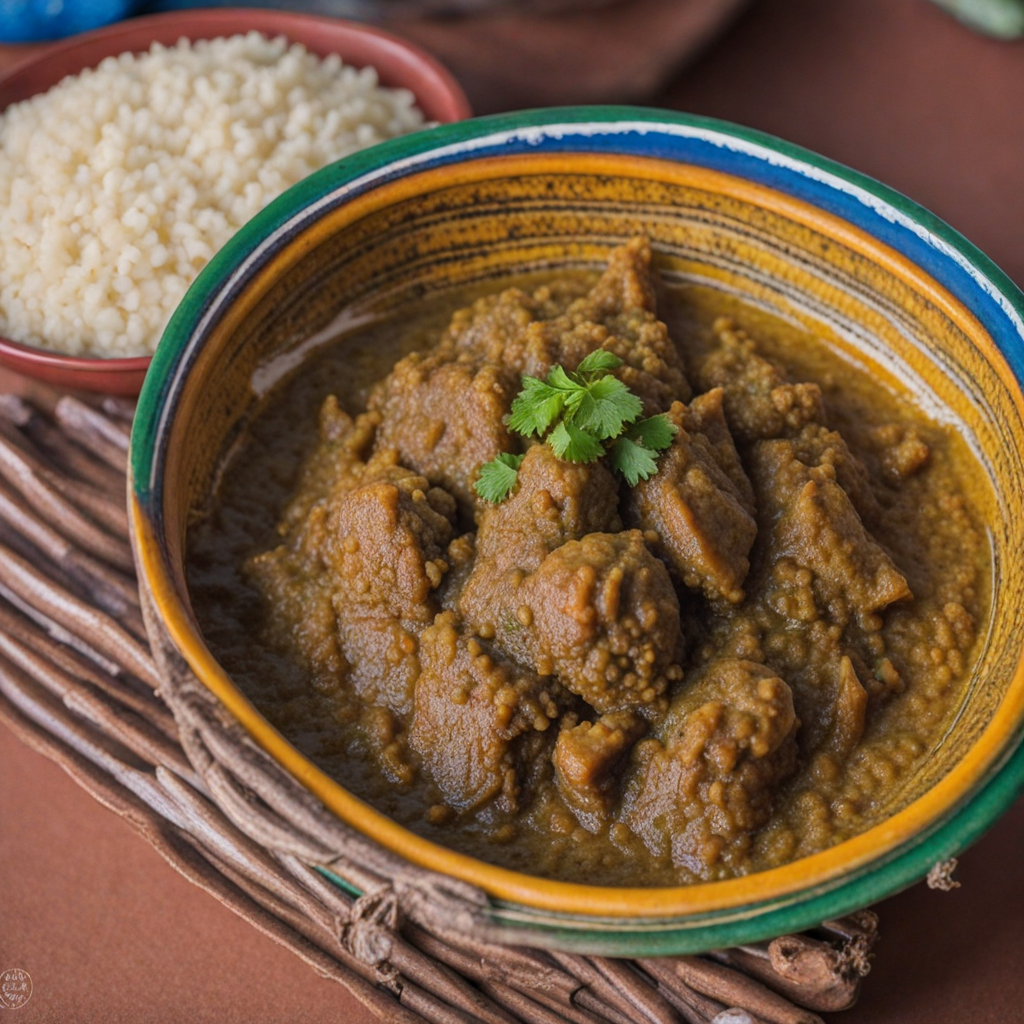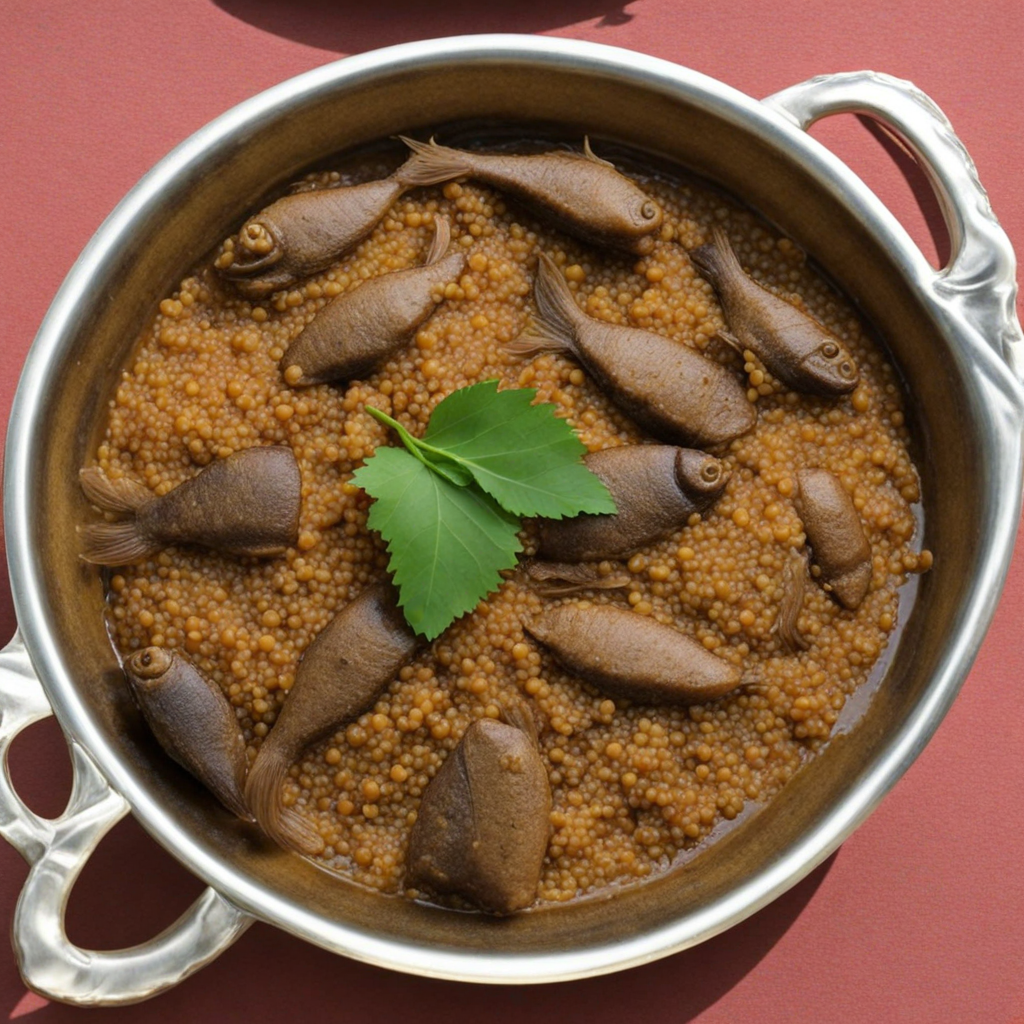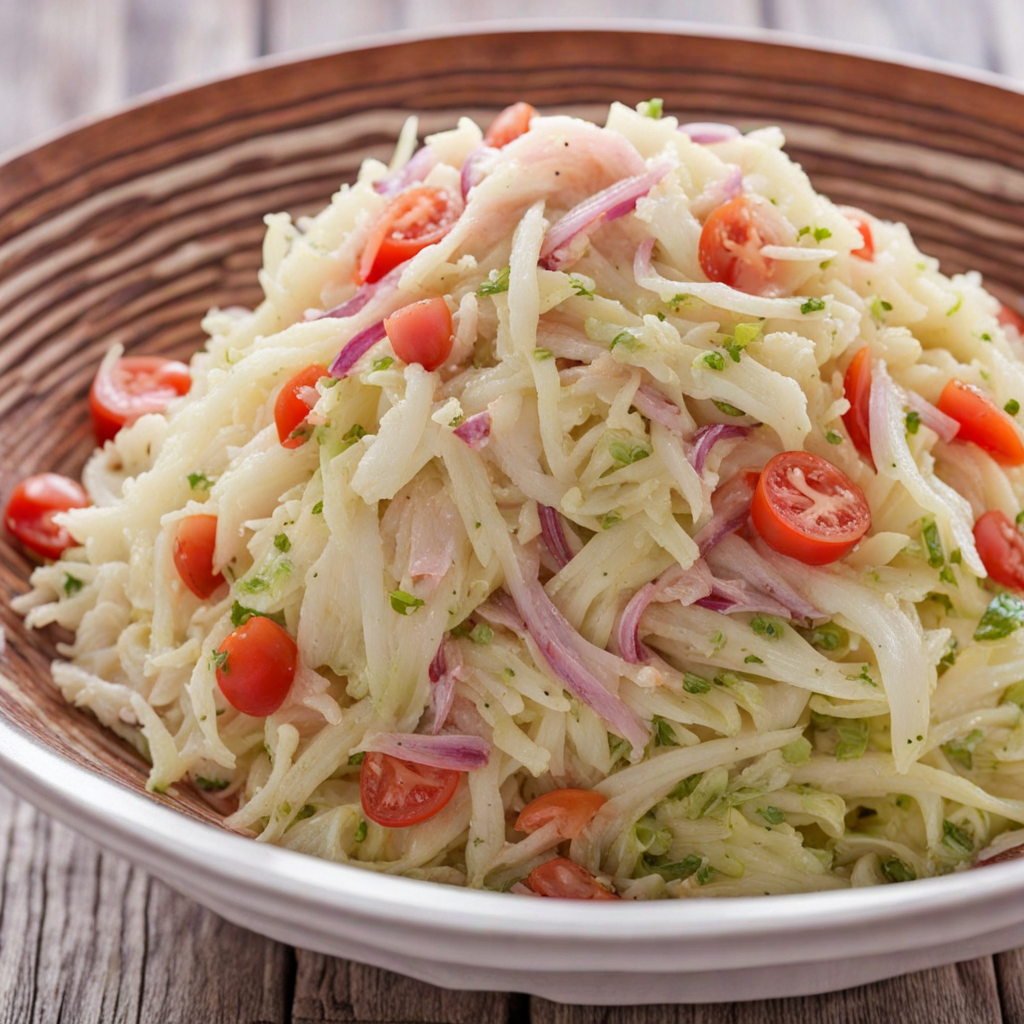Babenda
Babenda is a unique and flavorful dish hailing from Burkina Faso, celebrated for its rich cultural significance and hearty ingredients. This traditional meal primarily consists of a blend of leafy greens, typically sorrel or amaranth, which are combined with a staple grain such as millet or rice. The greens are often complemented by the addition of groundnuts (peanuts), which lend a delightful nuttiness, along with a variety of spices that enhance the overall flavor profile. The dish is usually enjoyed with a side of protein, such as fish or meat, providing a well-rounded meal that reflects the agricultural bounty of the region. What sets Babenda apart is its preparation method, which often involves a slow-cooking process that allows the flavors to meld together beautifully. The greens are cooked until tender, absorbing the spices and the essence of the accompanying protein. The result is a vibrant dish that is not only visually appealing but also packed with nutrients. The texture is a delightful combination of creamy from the groundnuts and tender from the cooked greens, making each bite a satisfying experience. Babenda is more than just a dish; it represents a communal way of eating in Burkina Faso. Often served during special occasions or family gatherings, it brings people together to share in the joy of good food. As you discover Babenda, you’ll find that it offers a taste of the rich heritage and traditions of Burkina Faso, inviting you to savor the diverse flavors of West African cuisine while providing a comforting and nourishing meal.
How It Became This Dish
Babenda: A Culinary Tradition of Burkina Faso #### Origins of Babenda Babenda, a traditional dish from Burkina Faso, is a rich and hearty meal that encapsulates the essence of West African culinary practices. The dish primarily consists of a mixture of leaves, often from the Jute plant (Corchorus olitorius), known locally as "sorrel," and a variety of grains, typically including millet or sorghum. The history of Babenda is deeply intertwined with the agricultural practices, social structures, and cultural traditions of the Burkinabé people. The origins of Babenda can be traced back to the indigenous communities of the region, who have cultivated millet and sorghum for millennia. These grains are staples in the diets of many West African countries due to their resilience in arid conditions and their nutritional value. The use of local leafy vegetables reflects the agrarian lifestyle of the people, who rely on seasonal produce to sustain their families. The practice of cooking leaves with grains is not unique to Burkina Faso; it is a common theme in many West African cuisines, where nutrient-dense vegetables are combined with grains to create balanced meals. #### Cultural Significance Babenda serves more than just a nutritional purpose; it is a dish steeped in cultural significance. In Burkina Faso, food is often associated with communal identity and family gatherings. Babenda is frequently prepared for special occasions, such as weddings, harvest festivals, and communal feasts, symbolizing unity and the sharing of resources. The preparation of Babenda often involves collaboration among family members and neighbors, reinforcing communal bonds and social ties. The dish is also emblematic of the resilience of the Burkinabé people. In a country that has faced periods of economic hardship and food insecurity, Babenda represents a way to utilize locally available ingredients, demonstrating resourcefulness and adaptability. The dish is often prepared in large quantities, making it suitable for sharing, which is a fundamental aspect of Burkinabé hospitality. Moreover, Babenda reflects the rich tapestry of ethnic diversity within Burkina Faso. The country is home to more than 60 different ethnic groups, each with its own culinary traditions. While the core ingredients of Babenda remain consistent, variations exist based on regional preferences and available resources. For instance, in some regions, cooks may add groundnuts (peanuts) or fish to enhance the flavor and nutritional profile, showcasing how local customs and ingredients influence the preparation of this beloved dish. #### Development Over Time The development of Babenda over time can be viewed through the lens of historical events, agricultural changes, and globalization. Traditionally, the dish was prepared using methods passed down through generations, with each family having its own secret recipe. The communal aspect of preparing Babenda has remained largely intact, but the ways in which it is made and served have evolved. In the past, the preparation of Babenda was labor-intensive, often requiring hours of work to harvest the leaves, grind the grains, and cook the dish over an open flame. However, with the advent of modern cooking appliances and techniques, such as gas stoves and food processors, the preparation time has been significantly reduced. This shift has made it easier for families, especially women, who traditionally bear the brunt of cooking responsibilities, to prepare Babenda more efficiently. The cultural significance of Babenda has also been affected by globalization. As Burkina Faso has become more integrated into the world economy, elements of Western cuisine have begun to infiltrate local diets. Fast food and processed foods are more accessible than ever, leading to changing eating habits among the younger generations. Despite these influences, many Burkinabé people continue to cherish traditional dishes like Babenda, often viewing them as a reminder of their heritage and identity. The dish has also gained attention beyond the borders of Burkina Faso, particularly in the context of culinary tourism and cultural exchange. Chefs and food enthusiasts from around the world are increasingly interested in exploring traditional African cuisines, leading to a growing appreciation for dishes like Babenda. This interest has prompted some Burkinabé chefs to innovate, incorporating Babenda into modern culinary presentations while maintaining its traditional roots. #### Nutritional Value and Modern Adaptations Nutritionally, Babenda is a powerhouse of vitamins and minerals, making it an integral part of a balanced diet. The Jute leaves are rich in vitamins A and C, calcium, and iron, while the grains provide essential carbohydrates and proteins. The dish is often enjoyed with a side of sauce or condiment, such as a spicy tomato sauce or a peanut sauce, adding complexity and flavor to the meal. In recent years, there has been a renewed focus on the importance of traditional diets and sustainable food practices. Nutritionists and health advocates are emphasizing the value of consuming locally sourced foods, and Babenda stands out as an exemplary dish that embodies these principles. In urban areas, where access to fresh produce can be limited, some entrepreneurs have begun to cultivate Jute leaves and other indigenous vegetables, making Babenda more accessible to city dwellers. Additionally, as interest in plant-based diets continues to grow globally, Babenda has the potential to resonate with a wider audience. Its vegetarian nature, combined with the option to adapt it to various dietary preferences, makes it a versatile dish that can appeal to health-conscious consumers. #### Conclusion Babenda is more than just a meal; it is a cultural artifact that tells the story of Burkina Faso’s agricultural heritage, communal values, and resilience. As it evolves over time, it continues to connect people to their roots while adapting to modern culinary practices. Whether served at a family gathering or presented in a contemporary restaurant, Babenda remains a symbol of the rich culinary landscape of Burkina Faso, embodying the spirit of community, tradition, and sustainability. Through this beloved dish, the essence of Burkinabé culture and history endures, inviting both locals and visitors to partake in its flavorful legacy.
You may like
Discover local flavors from Burkina Faso







